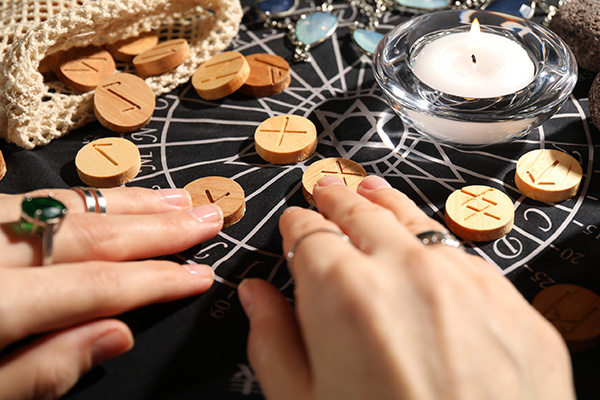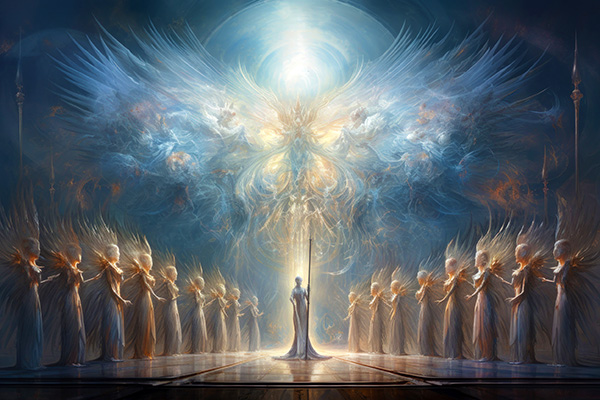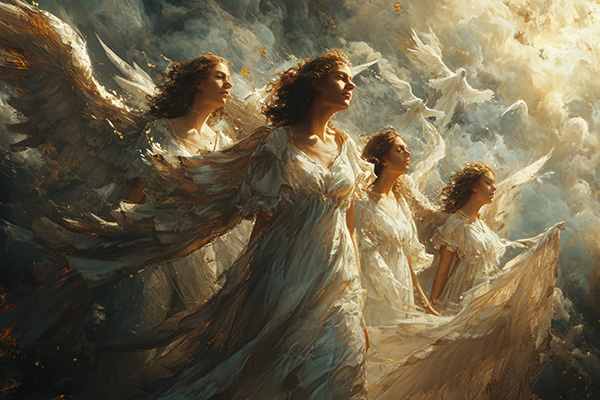Mysticism
Reclaim Your Power With Higher Consciousness
 To fully embrace the divine love, guidance and support that surrounds you, your heart and mind must open and expand with increasing inner confidence and soul alignment.
To fully embrace the divine love, guidance and support that surrounds you, your heart and mind must open and expand with increasing inner confidence and soul alignment.
This natural progression follows your initial spiritual awakening and allows your higher self to unfold. As you align more deeply with the universal flow, you gain access to higher states of consciousness and greater spiritual clarity.
As you embark on this transformative spiritual path, you may feel an acceleration of energy in and around you. This sensation is not random; it is a direct reflection of the profound shifts that are taking place on a soul level.
The energy of your environment also begins to shift in response, creating a dynamic interplay between your evolving consciousness and the world around you.
Throughout this process, your ancestors, spirit guides, and angels walk beside you, whether you consciously recognize their presence or not.
One of the fundamental truths about the spiritual realms is that energy moves much faster at higher frequencies. The higher dimensions operate at a refined vibrational level that is different from the density of our everyday physical reality.
As you attune to these higher frequencies, you will begin to notice an inner transformation — one that affects your thoughts, emotions, and overall perception of life.
Rune Forecast For The New Solar Year 2025
 As the Sun moves into Aries, we welcome a new solar year full of transformation, movement and empowerment. The shift to Aries signals new beginnings, renewed energy, and the courage to take action.
As the Sun moves into Aries, we welcome a new solar year full of transformation, movement and empowerment. The shift to Aries signals new beginnings, renewed energy, and the courage to take action.
Aries, the first sign of the zodiac, embodies the courageous essence of initiation, signaling a time to embrace new possibilities and harness our personal power.
This period marks a cosmic invitation to pursue new beginnings, to align with the flow of change, and to step boldly into action.
The energy of Aries, infused with renewed vitality and determination, encourages us to set clear intentions, embark on transformative endeavors, and move forward with unwavering confidence.
Whether we are initiating projects, fostering personal growth, or seeking clarity about our life’s direction, Aries offers us the courage to navigate life’s transitions with purpose.
To gain insight into the collective energy shaping the journey ahead, I turned to the ancient wisdom of the runes. The four runes I cast – Raidho, Laguz, Uruz, and Kenaz – present a profound narrative.
Raidho speaks of movement and life’s journey; Laguz reflects emotional flow and intuition; Uruz symbolizes inner strength and vitality; and Kenaz illuminates the path ahead with enlightenment and creativity.
Together, these runes guide us to embrace change with resilience and to embrace the transformative year that unfolds before us.
Ready For Your Spring Spiritual Renewal?
 Today marks the Spring Equinox and the first day of spring in the Northern Hemisphere. Known also as the Vernal Equinox, it is an astronomical event that marks one of the two times of the year when day and night are nearly equal in length. It usually occurs around March 20th or 21st in the Northern Hemisphere.
Today marks the Spring Equinox and the first day of spring in the Northern Hemisphere. Known also as the Vernal Equinox, it is an astronomical event that marks one of the two times of the year when day and night are nearly equal in length. It usually occurs around March 20th or 21st in the Northern Hemisphere.
During the equinox, the sun crosses the celestial equator and moves north. Many cultures and traditions celebrate it as a time of balance, renewal, and growth. As nature shifts into balance, we are invited to do the same — to clear away what no longer serves us and move into a season of light, action, and new beginnings.
Spring is a new beginning. A new sun rising. The dawn in the wheel of the year. At this time of year our minds are bright and alive with new ideas. Many of us feel inspired and excited to try new things. Life awakens in the warm sunlight and our spirits feel ready for a new beginning.
One of the longstanding customs associated with this time of year is the tradition of “spring cleaning.” Across cultures and generations, people have used this time of year to refresh their homes, clear out accumulated clutter, and invite new energy into their lives.
But spring cleaning is more than just cleaning up our physical space — it is a sacred ritual of renewal, release, and transformation. As the earth awakens from hibernation, we too are called to clear out the old and make room for new energy. From a spiritual perspective, this process is an opportunity to realign ourselves with higher frequencies, release stagnant energy, and invite clarity into our lives.
A Cord Cutting Ritual To Let Go And Move On
 Heartbreak can be one of the most difficult emotional hurdles we face.
Heartbreak can be one of the most difficult emotional hurdles we face.
Whether you’re recovering from a failed romantic relationship, a friendship that has run its course, going no contact with a toxic family member, or any significant emotional connection that has ended, finding closure and healing is essential to moving forward.
Unresolved emotions and lingering energetic attachments can weigh heavily on your heart, making it difficult to embrace new opportunities and experiences.
A powerful way to release these lingering energy attachments is through a cord-cutting ritual. This practice helps cultivate self-love and emotional freedom, and opens the door to new beginnings. Unlike repressing feelings or rushing into distractions, cord cutting allows you to consciously acknowledge and release energetic attachments that no longer serve you.
Energetic cords are metaphysical connections that form between people, places, or situations. They are strengthened by intense emotions and shared experiences. While some cords nourish us with love, support, and positive energy, others can drain our vitality — especially when a relationship has ended or become unhealthy. These draining cords can lead to repetitive thoughts, emotional stagnation, or a feeling of being energetically “stuck.”
A cord cutting ritual does not erase cherished memories or sever positive emotions you may have shared with someone. Instead, it focuses on releasing unhealthy attachments that prevent emotional freedom and personal growth. By clearing these residual energies, you make room for peace, clarity, and new possibilities to flow into your life.


